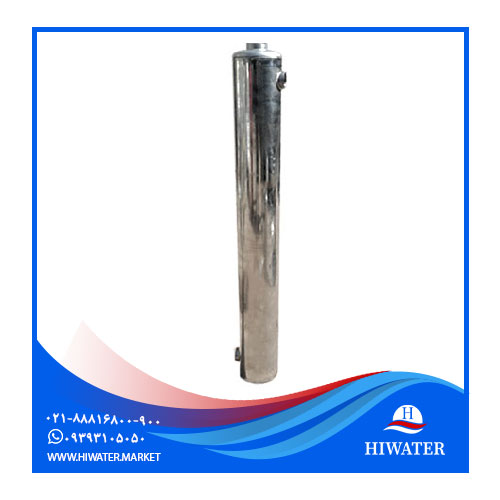Prices of HiWater High-Efficiency Stainless Steel Shell-and-Tube Heat Exchangers
Prices of HiWater High-Efficiency Stainless Steel Shell-and-Tube Heat Exchangers
Prices of Heat Exchangers
Prices of HiWater High-Efficiency Stainless Steel Shell-and-Tube Heat Exchangers
The HiWater high-efficiency stainless steel shell-and-tube heat exchangers are among the most commonly used types of heat exchangers with widespread applications in residential settings and industrial projects. As shown, HiWater high-efficiency stainless steel shell-and-tube heat exchangers are offered in two series: the high-efficiency 316 stainless steel and high-efficiency 304 stainless steel. These exchangers are designed and manufactured in various sizes and capacities. Alongside their exceptional build quality, these heat exchangers have reasonable prices and some with valid warranties.
Benefits of HiWater High-Efficiency Stainless Steel Shell-and-Tube Heat Exchanger
In general, the advantages of shell-and-tube heat exchangers include the ability to be made from various materials such as steel, brass, and stainless steel. Each material is chosen for a certain application. When constructed from steel, these heat exchangers are ideal for use in environments where the fluids exhibit corrosive properties.
From a cost perspective, this heat exchanger is more affordable compared to other types of exchangers.
Since shell-and-tube heat exchangers are often built with a robust structure, they are easily used in high-pressure and high-temperature situations, operating without causing any operational or system issues.
In the case that scaling occurs, these heat exchangers can be descaled through physical or chemical methods.
And so on.
Components of HiWater High-Efficiency Stainless Steel Shell-and-Tube Heat Exchanger
Shell: The shell, or casing, is one of the primary and most important components of the heat exchanger. It not only covers all other components but also contains one of the two fluids. Therefore, its ability to resist corrosion, pressure, and high temperatures is essential. To enhance its durability against these factors, the shell is made from steel, stainless steel, brass, etc.
Tubes: As the name “Shell-and-Tube Heat exchanger” suggests, the tubes are another vital component, alongside the shell. In industrial and chemical applications, the tubes are usually made from copper, steel, brass, etc., ensuring efficient heat transfer in a short time. The tubes are generally shaped as straight or U-shaped.
Baffle: Inside the shell, at certain intervals according to the length of the tubes, some plates, called baffles, are used. These baffles have holes sized to fit the tubes, and each hole accommodates only one tube. These baffles are used inside the heat exchangers for two reasons: first, they maintain the proper spacing between tubes, especially in cases where the tubes are long, preventing them from bending; second, they disrupt the flow of the fluid within the shell, increasing the heat transfer rate, thereby improving the overall efficiency of the device.
Tube Sheet: In all heat exchangers, tube sheets are used at the ends of the tubes to seal them. Accordingly, there are three types of shell-and-tube heat exchangers: The first model uses tube sheets on both ends of the tubes, covering them completely within the shell. The second model uses two tube sheets, one covered with the shell while the other remains free-floating. The third model uses a single tube sheet, which is totally covered by the shell.
And so on.
How HiWater High-Efficiency Stainless Steel Shell-and-Tube Heat Exchanger Operates
The operation of the Shell-and-Tube Heat exchanger is quite simple according to its components. As previously stated, the primary function of the heat exchanger is to transfer heat from one fluid to another, in an indirect manner. Accordingly, one fluid, typically the primary fluid, enters the coils via the inlet. On the other hand, the second fluid, responsible for transferring heat to the main fluid, is directed into the shell via the inlet. Due to the temperature difference between the two fluids, heat flows from the hotter fluid through the walls of the coils to the cooler fluid. This process occurs along the path between the inlet and outlet, leading to a temperature change in both fluids as they exit.
Purchasing HiWater High-Efficiency Stainless Steel Shell-and-Tube Heat Exchanger
As the name suggests, these heat exchangers are the products of HiWater Group and are designed and produced by its expert engineers and skilled technicians. With a brilliant record and extensive experience gained through partnerships with both domestic and international companies, HiWater has obtained loyal customers through manufacturing and supplying a range of domestic and industrial products. To explore and purchase HiWater’s heat exchangers and other products, visit the website, and contact our consultants for free consultation services.
Showing 1–8 of 18 results
-

مبدل پوسته لوله KW 100 پربازده استیل 304 هایواتر مدل HW 100-45 he 304
Read more -

مبدل پوسته لوله KW 100 پربازده استیل 316 هایواتر مدل HW 100-45 he 316
Read more -

مبدل پوسته لوله KW 120 پربازده استیل 304 هایواتر مدل HW 120-54 he 304
Read more -

مبدل پوسته لوله KW 120 پربازده استیل 316 هایواتر مدل HW 120-54 he 316
Read more -

مبدل پوسته لوله KW 140 پربازده استیل 304 هایواتر مدل HW 140-63 he 304
Read more -

مبدل پوسته لوله KW 140 پربازده استیل 316 هایواتر مدل HW 140-63 he 316
Read more -

مبدل پوسته لوله KW 160 پربازده استیل 304 هایواتر مدل HW 160-72 he 304
Read more -

مبدل پوسته لوله KW 160 پربازده استیل 316 هایواتر مدل HW 160-72 he 316
Read more
